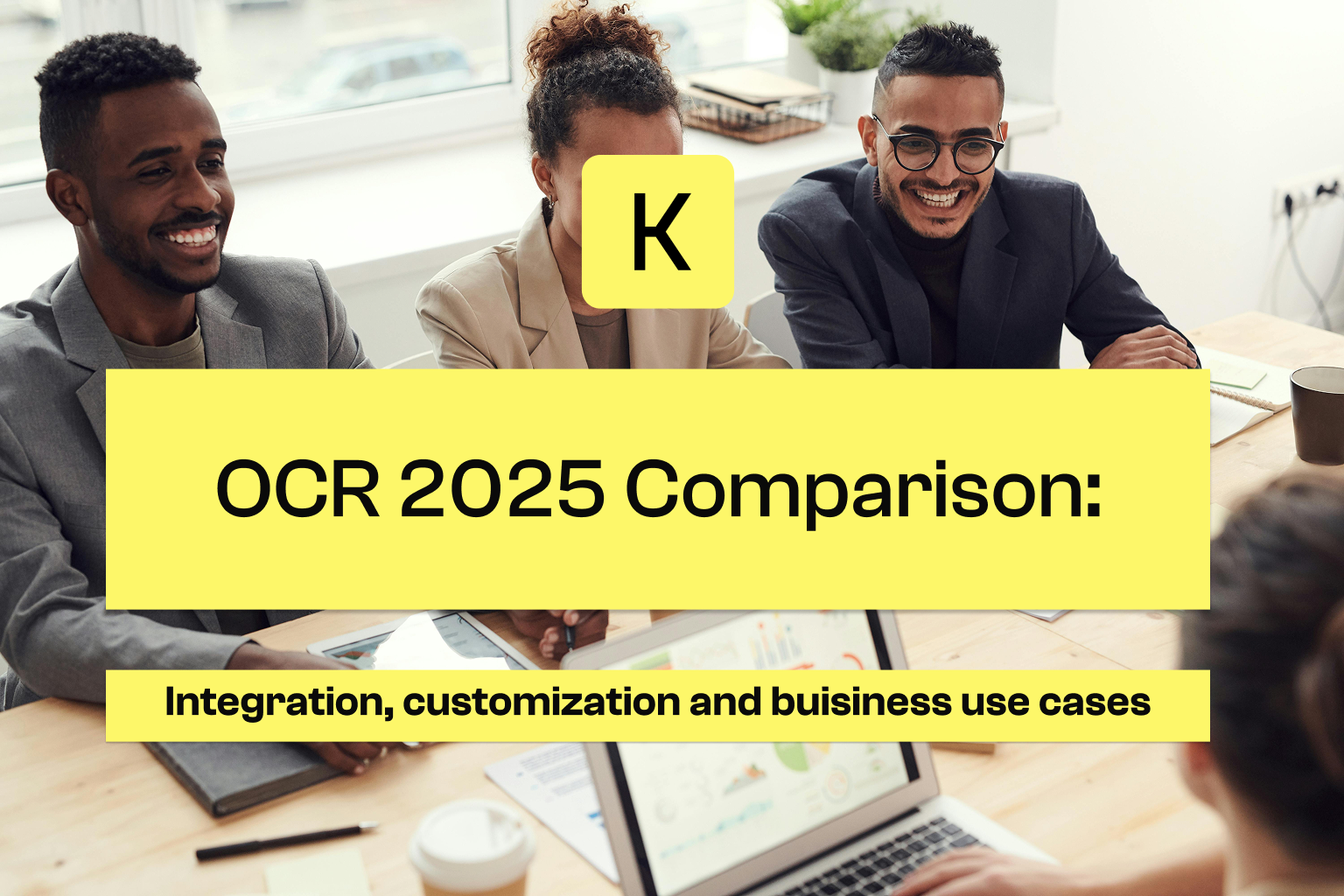.png)
How to Accurately Classify Documents with Intelligent OCR? A Concrete Use Case on ID Documents
Case study
Last update:
April 17, 2025
5 minutes
Among the many solutions available on the market, Tesseract is often cited as one of the best open source OCR software. But is it still the best solution in 2025? We'll analyze its performance, pros, cons, and open-source OCR alternatives.
Tesseract is a top open-source OCR, but is it still best in 2025? Let’s review its pros, cons, and alternatives.
OCR (Optical Character Recognition) enables the extraction of text from images or scanned documents, making data management and analysis easier. T
To select the most suitable data extraction solution, it's crucial to assess the key features of the various tools available.
In this article, we will focus on Tesseract, exploring its strengths and limitations, and comparing it with alternative open-source solutions to help you choose the best OCR tool for your needs. What is Tesseract OCR?
.png)
Tesseract OCR is an OCR engine capable of detecting and extracting text from images, transforming them into actionable digital content.
Originally developed in the 1980s by Hewlett-Packard, the project gained new momentum when it was taken over by Google, which now handles its development and maintenance.
This free open-source solution, offered under the Apache 2.0 license, is a valuable resource for developers and businesses seeking to maximize efficiency while keeping costs under control. Moreover, thanks to its open-source nature, Tesseract can be used, modified, and distributed freely, offering maximum flexibility. This openness also allows for continuous improvements, with numerous contributions from the global developer community regularly enhancing the software with new features and performance upgrades.
Let's now examine some of the key advantages that Tesseract offers for optical character recognition.
Tesseract has some limitations that should be considered when evaluating its performance for various tasks.
Tesseract remains one of the most popular and robust open-source OCR solutions in 2025, particularly for standard text extraction applications.
However, while it performs well for simple and common tasks, its limitations with complex layouts, handwritten text recognition, and reliance on image preprocessing may lead some users to explore other alternatives.
Among the open-source OCR solutions available, several stand out for their unique features and performance, which either complement or, in some cases, surpass Tesseract for specific applications.
For example, CuneiForm excels in recognizing text from old or non-standardized documents. Meanwhile, Mistral stands out for its ability to process complex structured documents, catering to more specialized needs.
Few open-source OCR tools offer a demo version accessible directly online, as most require downloading and configuration beforehand, which can be a barrier for users wanting to test the solution quickly. However, three tools distinguish themselves by offering online demo versions, allowing users to evaluate them without installation:

New AI-based OCR solutions are bringing major advancements. With deep learning and computer vision, they better understand document structure and effectively recognize handwritten or printed text, even in complex conditions. Their integration of natural language processing allows them to extract information with precision. They also stand out for their speed, adaptability, and automated pre- and post-processing features. For complex projects or large data volumes, these technologies offer a more efficient alternative.
Thus, while Tesseract remains a relevant choice for standard needs and limited budgets, AI-based solutions are ideal for higher demands. The choice will depend on the specific priorities and needs of each user.
To go further, check out our selection of the top 10 open-source OCR software in 2025. You'll find tools that address a variety of needs and help you choose the most suitable solution for your projects.
Resources
.png)
How to Accurately Classify Documents with Intelligent OCR? A Concrete Use Case on ID Documents
Case study

Compare 4 OCRs according to your business uses, types of documents, API integration, customization and business logic.
Blog

Complete comparison of the best OCR solutions: Performances, use cases, prices.
Blog